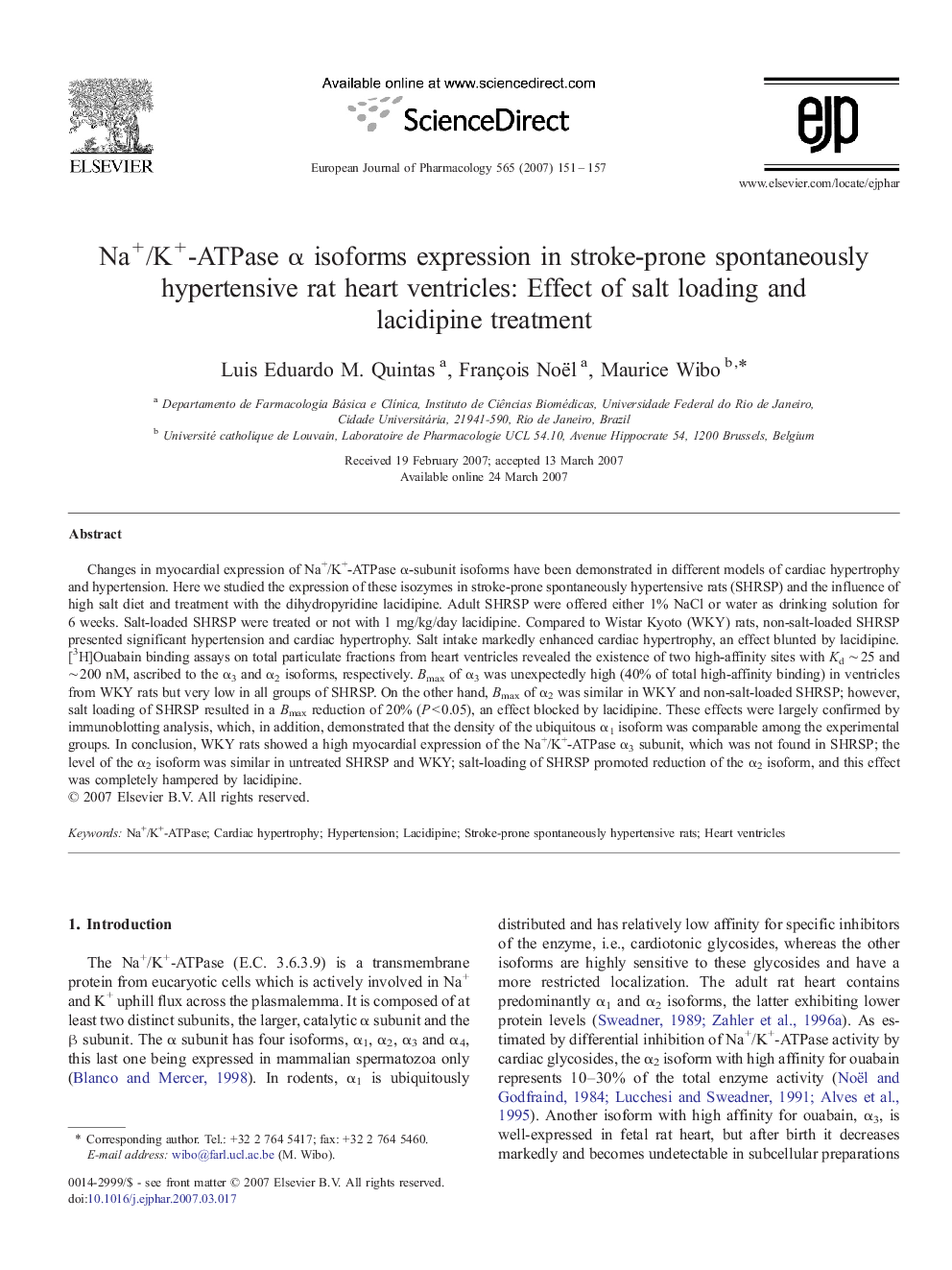| Article ID | Journal | Published Year | Pages | File Type |
|---|---|---|---|---|
| 2536196 | European Journal of Pharmacology | 2007 | 7 Pages |
Changes in myocardial expression of Na+/K+-ATPase α-subunit isoforms have been demonstrated in different models of cardiac hypertrophy and hypertension. Here we studied the expression of these isozymes in stroke-prone spontaneously hypertensive rats (SHRSP) and the influence of high salt diet and treatment with the dihydropyridine lacidipine. Adult SHRSP were offered either 1% NaCl or water as drinking solution for 6 weeks. Salt-loaded SHRSP were treated or not with 1 mg/kg/day lacidipine. Compared to Wistar Kyoto (WKY) rats, non-salt-loaded SHRSP presented significant hypertension and cardiac hypertrophy. Salt intake markedly enhanced cardiac hypertrophy, an effect blunted by lacidipine. [3H]Ouabain binding assays on total particulate fractions from heart ventricles revealed the existence of two high-affinity sites with Kd ∼ 25 and ∼ 200 nM, ascribed to the α3 and α2 isoforms, respectively. Bmax of α3 was unexpectedly high (40% of total high-affinity binding) in ventricles from WKY rats but very low in all groups of SHRSP. On the other hand, Bmax of α2 was similar in WKY and non-salt-loaded SHRSP; however, salt loading of SHRSP resulted in a Bmax reduction of 20% (P < 0.05), an effect blocked by lacidipine. These effects were largely confirmed by immunoblotting analysis, which, in addition, demonstrated that the density of the ubiquitous α1 isoform was comparable among the experimental groups. In conclusion, WKY rats showed a high myocardial expression of the Na+/K+-ATPase α3 subunit, which was not found in SHRSP; the level of the α2 isoform was similar in untreated SHRSP and WKY; salt-loading of SHRSP promoted reduction of the α2 isoform, and this effect was completely hampered by lacidipine.
